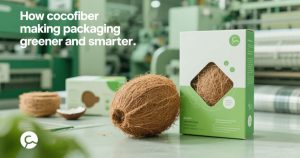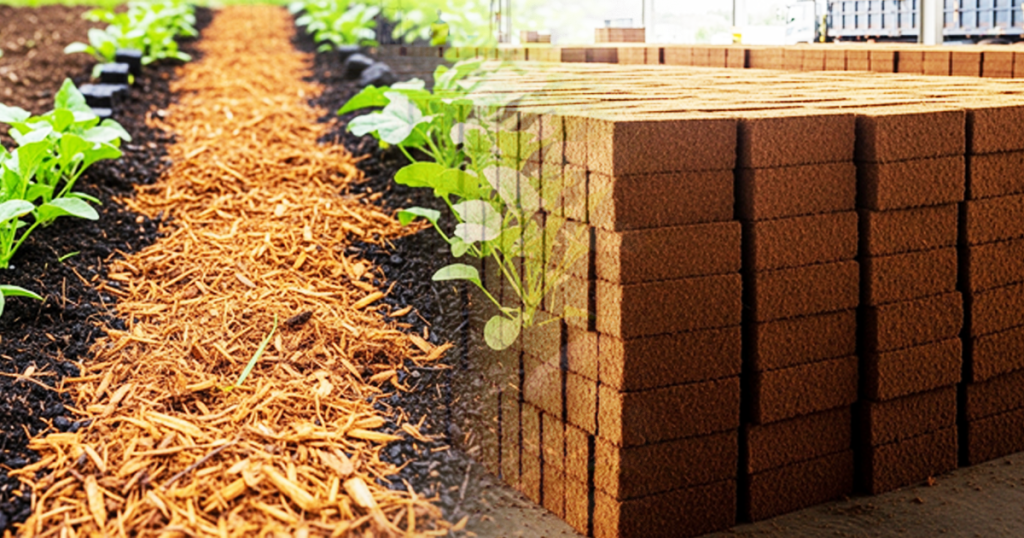Harnessing Tropical Waste for Agricultural Solutions
In the heart of the tropics, coconut plantations generate millions of tons of byproducts each year. Among these is the fibrous husk, often discarded or burned, creating environmental concerns.
However, what was once waste is now a critical component in the global food production chain. As a researcher specializing in cocopeat a spongy substrate derived from coconut husk fibers I’ve observed its remarkable rise from agricultural residue to a sustainable solution supporting global food security.
Cocopeat, also known as coir pith, undergoes processing into compact blocks that are lightweight, sterile, and renewable. Their unique physical and chemical properties make them ideal for horticulture, especially in hydroponic and greenhouse systems.
In countries where arable land is diminishing or where water scarcity limits soil-based farming, cocopeat offers a dependable growing medium.
Cocopeat’s Scientific Edge in Plant Cultivation
What sets cocopeat apart is its ability to retain moisture while allowing excellent aeration. These characteristics are vital for root development and nutrient absorption. Its neutral pH range of 5.5 to 6.5 also means it requires minimal chemical adjustment, making it compatible with most crops.
Recent lab tests have revealed that cocopeat can hold up to eight times its weight in water. This water-holding capacity reduces irrigation frequency, a game changer in regions facing drought.
Moreover, the fibrous structure supports microbial life, enhancing nutrient cycling within the root zone. In our trials with lettuce, tomatoes, and strawberries, yield increased by 20–30% when cocopeat blocks were used compared to traditional soil.
This performance is not merely anecdotal; it is backed by ongoing agronomic studies across Asia, Europe, and Africa. With climate change threatening agricultural stability, cocopeat offers both adaptability and resilience for farmers.
Exporting Sustainability: A Growing Global Trade
Cocopeat’s journey doesn’t end in the tropics. Once processed and sun-dried, the material is compressed into blocks for easy export. Major producers like Indonesia, India, and Sri Lanka ship these blocks globally to meet the rising demand from commercial greenhouses and urban farming projects.
As someone who has worked closely with exporters and agricultural cooperatives, I’ve seen first-hand how this trade supports local economies. The demand for cocopeat has stimulated employment across processing facilities and incentivized sustainable coconut harvesting practices.
Export figures have doubled over the last five years, with Europe and North America being the largest markets. Interestingly, several government-backed food security programs now incorporate cocopeat into urban agriculture initiatives.
These include rooftop gardens, container farming, and school-based greenhouse systems. The versatility of cocopeat supports this innovation, enabling food production in spaces previously deemed unsuitable.
Bridging the Gap Between Technology and Tradition
Cocopeat illustrates a fusion of traditional agricultural waste and modern agritech innovation. In the lab, we continue to experiment with blends adding biochar, mycorrhizal fungi, or slow-release fertilizers to tailor cocopeat blocks for specific crops or environments. This customization allows farmers to meet local growing challenges while maintaining sustainable practices.
Furthermore, its organic origin makes it biodegradable and easy to dispose of or reuse as compost. Unlike rockwool or peat moss, which carry environmental baggage, cocopeat aligns with circular economy principles.
In our latest trials in controlled-environment agriculture, cocopeat proved more durable and reusable across multiple crop cycles. Its low decomposition rate means blocks maintain structure over time, reducing replacement costs.
Cocopeat and the Future of Food Security
Feeding a growing global population expected to reach nearly 10 billion by 2050 requires scalable and environmentally friendly farming systems. Cocopeat is uniquely positioned to play a central role. Its combination of sustainability, affordability, and efficiency meets the needs of modern agriculture while respecting ecological limits.
By repurposing agricultural waste into productive growing media, we are not only addressing food insecurity but also promoting resource conservation. From the tropical origins of the humble coconut to dinner plates around the world, cocopeat’s journey is an example of how innovation rooted in tradition can shape the future of food.







